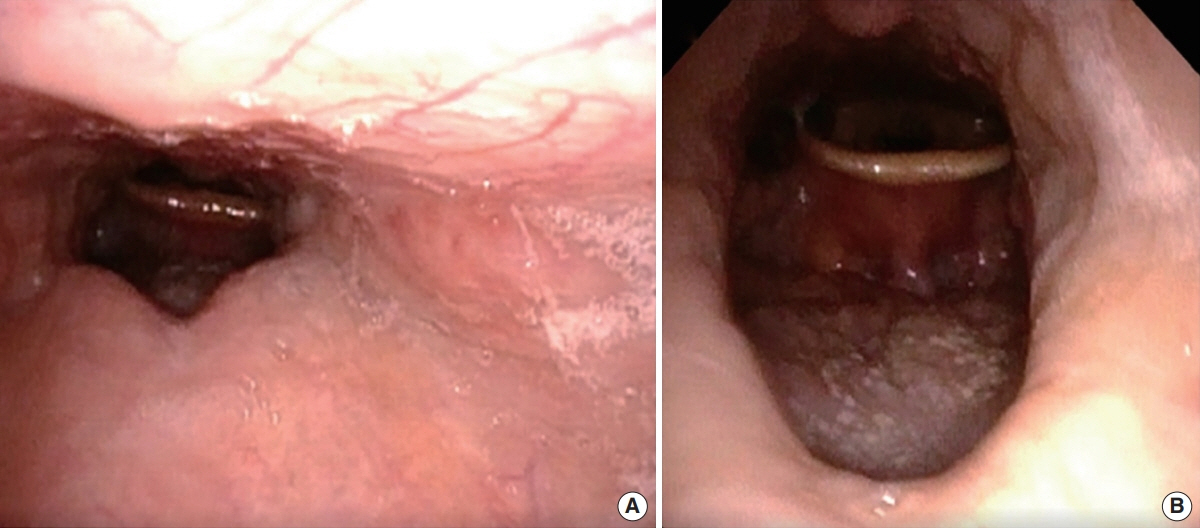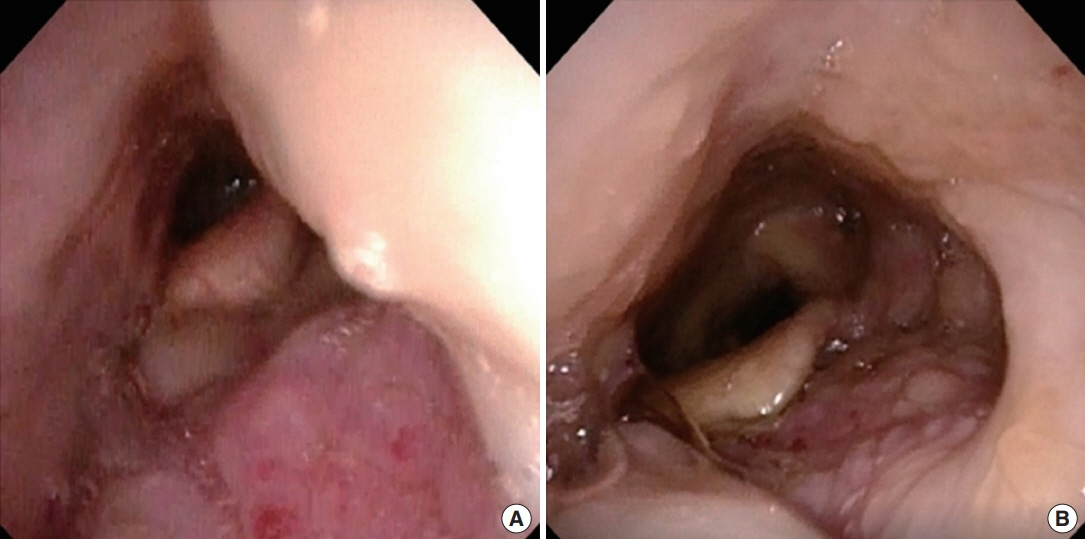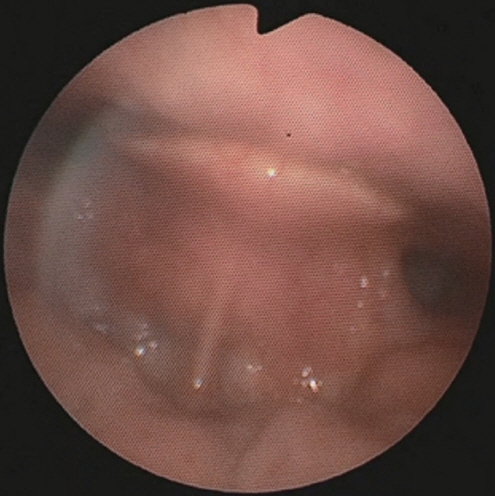Clin Exp Otorhinolaryngol.
2021 May;14(2):149-158. 10.21053/ceo.2020.01704.
The Emerging Role of Drug-Induced Sleep Endoscopy in the Management of Obstructive Sleep Apnea
- Affiliations
-
- 1Department of Otolaryngology-Head & Neck Surgery, National University Hospital, Singapore
- 2Faculty of Dentistry, National University of Singapore, Singapore
- 3Department of Otolaryngology, Singapore General Hospital, SingHealth Duke-NUS Sleep Centre, Singapore
- 4Department of Cardiology, National University Heart Centre Singapore, Singapore
- 5Department of Medicine, Yong Loo Lin School of Medicine, National University of Singapore, Singapore
- 6Cardiovascular Research Institute, National University of Singapore, Singapore
- KMID: 2515427
- DOI: http://doi.org/10.21053/ceo.2020.01704
Abstract
- Obstructive sleep apnea is a prevalent sleep disorder characterized by partial or complete obstruction of the upper airway. Continuous positive airway pressure is the first-line therapy for most patients, but adherence is often poor. Alternative treatment options such as mandibular advancement devices, positional therapy, and surgical interventions including upper airway stimulation target different levels and patterns of obstruction with varying degrees of success. Drug-induced sleep endoscopy enables the visualization of upper airway obstruction under conditions mimicking sleep. In the era of precision medicine, this additional information may facilitate better decision-making when prescribing alternative treatment modalities, with the hope of achieving better adherence and/or success rates. This review discusses the current knowledge and evidence on the role of drug-induced sleep endoscopy in the non-positive airway pressure management of obstructive sleep apnea.
Figure
Reference
-
1. Benjafield AV, Ayas NT, Eastwood PR, Heinzer R, Ip MS, Morrell MJ, et al. Estimation of the global prevalence and burden of obstructive sleep apnoea: a literature-based analysis. Lancet Respir Med. 2019; Aug. 7(8):687–98.
Article2. Bradley TD, Floras JS. Obstructive sleep apnoea and its cardiovascular consequences. Lancet. 2009; Jan. 373(9657):82–93.
Article3. Lee CH, Sethi R, Li R, Ho HH, Hein T, Jim MH, et al. Obstructive sleep apnea and cardiovascular events after percutaneous coronary intervention. Circulation. 2016; May. 133(21):2008–17.
Article4. Koo CY, Aung AT, Chen Z, Kristanto W, Sim HW, Tam WW, et al. Sleep apnoea and cardiovascular outcomes after coronary artery bypass grafting. Heart. 2020; Oct. 106(19):1495–502.
Article5. Rotenberg BW, Murariu D, Pang KP. Trends in CPAP adherence over twenty years of data collection: a flattened curve. J Otolaryngol Head Neck Surg. 2016; Aug. 45(1):43.
Article6. Sutherland K, Kairaitis K, Yee BJ, Cistulli PA. From CPAP to tailored therapy for obstructive sleep Apnoea. Multidiscip Respir Med. 2018; Dec. 13:44.
Article7. Virk JS, Kotecha B. When continuous positive airway pressure (CPAP) fails. J Thorac Dis. 2016; Oct. 8(10):E1112–21.
Article8. Waters T. Alternative interventions for obstructive sleep apnea. Cleve Clin J Med. 2019; Sep. 86(9 Suppl 1):34–41.
Article9. Eckert DJ. Phenotypic approaches to obstructive sleep apnoea: new pathways for targeted therapy. Sleep Med Rev. 2018; Feb. 37:45–59.10. Sands SA, Edwards BA, Terrill PI, Taranto-Montemurro L, Azarbarzin A, Marques M, et al. Phenotyping pharyngeal pathophysiology using polysomnography in patients with obstructive sleep apnea. Am J Respir Crit Care Med. 2018; May. 197(9):1187–97.
Article11. Sands SA, Terrill PI, Edwards BA, Taranto Montemurro L, Azarbarzin A, Marques M, et al. Quantifying the arousal threshold using polysomnography in obstructive sleep apnea. Sleep. 2018; Jan. 41(1):zsx183.
Article12. Terrill PI, Edwards BA, Nemati S, Butler JP, Owens RL, Eckert DJ, et al. Quantifying the ventilatory control contribution to sleep apnoea using polysomnography. Eur Respir J. 2015; Feb. 45(2):408–18.
Article13. Genta PR, Sands SA, Butler JP, Loring SH, Katz ES, Demko BG, et al. Airflow shape is associated with the pharyngeal structure causing OSA. Chest. 2017; Sep. 152(3):537–46.
Article14. Vroegop AV, Vanderveken OM, Boudewyns AN, Scholman J, Saldien V, Wouters K, et al. Drug-induced sleep endoscopy in sleep-disordered breathing: report on 1,249 cases. Laryngoscope. 2014; Mar. 124(3):797–802.
Article15. Woodson BT, Wooten MR. A multisensor solid-state pressure manometer to identify the level of collapse in obstructive sleep apnea. Otolaryngol Head Neck Surg. 1992; Nov. 107(5):651–6.
Article16. De Vito A, Carrasco Llatas M, Ravesloot MJ, Kotecha B, De Vries N, Hamans E, et al. European position paper on drug-induced sleep endoscopy: 2017 update. Clin Otolaryngol. 2018; Dec. 43(6):1541–52.
Article17. De Vito A, Carrasco Llatas M, Vanni A, Bosi M, Braghiroli A, Campanini A, et al. European position paper on drug-induced sedation endoscopy (DISE). Sleep Breath. 2014; Sep. 18(3):453–65.
Article18. Kotecha B, De Vito A. Drug induced sleep endoscopy: its role in evaluation of the upper airway obstruction and patient selection for surgical and non-surgical treatment. J Thorac Dis. 2018; Jan. 10(Suppl 1):S40–7.
Article19. Blumen M, Bequignon E, Chabolle F. Drug-induced sleep endoscopy: a new gold standard for evaluating OSAS? Part II: results. Eur Ann Otorhinolaryngol Head Neck Dis. 2017; Apr. 134(2):109–15.
Article20. Croft CB, Pringle M. Sleep nasendoscopy: a technique of assessment in snoring and obstructive sleep apnoea. Clin Otolaryngol Allied Sci. 1991; Oct. 16(5):504–9.
Article21. Amos JM, Durr ML, Nardone HC, Baldassari CM, Duggins A, Ishman SL. Systematic review of drug-induced sleep endoscopy scoring systems. Otolaryngol Head Neck Surg. 2018; Feb. 158(2):240–8.
Article22. Dijemeni E, D’Amone G, Gbati I. Drug-induced sedation endoscopy (DISE) classification systems: a systematic review and meta-analysis. Sleep Breath. 2017; Dec. 21(4):983–94.
Article23. Lee CH, Seay EG, Dedhia RC. IMAGES: drug-induced sleep endoscopy. An investigative tool for mechanisms of PAP failure. J Clin Sleep Med. 2019; Jan. 15(1):171–2.
Article24. Ramar K, Dort LC, Katz SG, Lettieri CJ, Harrod CG, Thomas SM, et al. Clinical practice guideline for the treatment of obstructive sleep apnea and snoring with oral appliance therapy: an update for 2015. J Clin Sleep Med. 2015; Jul. 11(7):773–827.
Article25. Brown EC, Cheng S, McKenzie DK, Butler JE, Gandevia SC, Bilston LE. Tongue and lateral upper airway movement with mandibular advancement. Sleep. 2013; Mar. 36(3):397–404.
Article26. Chan AS, Sutherland K, Schwab RJ, Zeng B, Petocz P, Lee RW, et al. The effect of mandibular advancement on upper airway structure in obstructive sleep apnoea. Thorax. 2010; Aug. 65(8):726–32.
Article27. Sutherland K, Deane SA, Chan AS, Schwab RJ, Ng AT, Darendeliler MA, et al. Comparative effects of two oral appliances on upper airway structure in obstructive sleep apnea. Sleep. 2011; Apr. 34(4):469–77.
Article28. Phillips CL, Grunstein RR, Darendeliler MA, Mihailidou AS, Srinivasan VK, Yee BJ, et al. Health outcomes of continuous positive airway pressure versus oral appliance treatment for obstructive sleep apnea: a randomized controlled trial. Am J Respir Crit Care Med. 2013; Apr. 187(8):879–87.29. Johal A, Battagel JM, Kotecha BT. Sleep nasendoscopy: a diagnostic tool for predicting treatment success with mandibular advancement splints in obstructive sleep apnoea. Eur J Orthod. 2005; Dec. 27(6):607–14.
Article30. Huntley C, Cooper J, Stiles M, Grewal R, Boon M. Predicting success of oral appliance therapy in treating obstructive sleep apnea using drug-induced sleep endoscopy. J Clin Sleep Med. 2018; Aug. 14(8):1333–7.
Article31. Vroegop AV, Vanderveken OM, Dieltjens M, Wouters K, Saldien V, Braem MJ, et al. Sleep endoscopy with simulation bite for prediction of oral appliance treatment outcome. J Sleep Res. 2013; Jun. 22(3):348–55.
Article32. Vonk PE, Uniken Venema JA, Hoekema A, Ravesloot MJ, van de Velde-Muusers JA, de Vries N. Jaw thrust versus the use of a boil-andbite mandibular advancement device as a screening tool during druginduced sleep endoscopy. J Clin Sleep Med. 2020; Jul. 16(7):1021–7.
Article33. Vroegop AV, Vanderveken OM, Verbraecken JA. Drug-induced sleep endoscopy: evaluation of a selection tool for treatment modalities for obstructive sleep apnea. Respiration. 2020; 99(5):451–7.
Article34. Park D, Kim JS, Heo SJ. The effect of the modified jaw-thrust maneuver on the depth of sedation during drug-induced sleep endoscopy. J Clin Sleep Med. 2019; Oct. 15(10):1503–8.
Article35. Op de Beeck S, Dieltjens M, Verbruggen AE, Vroegop AV, Wouters K, Hamans E, et al. Phenotypic labelling using drug-induced sleep endoscopy improves patient selection for mandibular advancement device outcome: a prospective study. J Clin Sleep Med. 2019; Aug. 15(8):1089–99.
Article36. Cartwright RD. Effect of sleep position on sleep apnea severity. Sleep. 1984; 7(2):110–4.
Article37. Mador MJ, Kufel TJ, Magalang UJ, Rajesh SK, Watwe V, Grant BJ. Prevalence of positional sleep apnea in patients undergoing polysomnography. Chest. 2005; Oct. 128(4):2130–7.
Article38. Richard W, Kox D, den Herder C, Laman M, van Tinteren H, de Vries N. The role of sleep position in obstructive sleep apnea syndrome. Eur Arch Otorhinolaryngol. 2006; Oct. 263(10):946–50.
Article39. Eijsvogel MM, Ubbink R, Dekker J, Oppersma E, de Jongh FH, van der Palen J, et al. Sleep position trainer versus tennis ball technique in positional obstructive sleep apnea syndrome. J Clin Sleep Med. 2015; Jan. 11(2):139–47.
Article40. Vonk PE, van de Beek MJ, Ravesloot MJ, de Vries N. Drug-induced sleep endoscopy: new insights in lateral head rotation compared to lateral head and trunk rotation in (non)positional obstructive sleep apnea patients. Laryngoscope. 2019; Oct. 129(10):2430–5.
Article41. Safiruddin F, Koutsourelakis I, de Vries N. Analysis of the influence of head rotation during drug-induced sleep endoscopy in obstructive sleep apnea. Laryngoscope. 2014; Sep. 124(9):2195–9.
Article42. Victores AJ, Hamblin J, Gilbert J, Switzer C, Takashima M. Usefulness of sleep endoscopy in predicting positional obstructive sleep apnea. Otolaryngol Head Neck Surg. 2014; Mar. 150(3):487–93.
Article43. Ravesloot MJ, de Vries N. One hundred consecutive patients undergoing drug-induced sleep endoscopy: results and evaluation. Laryngoscope. 2011; Dec. 121(12):2710–6.
Article44. Dieltjens M, Vroegop AV, Verbruggen AE, Wouters K, Willemen M, De Backer WA, et al. A promising concept of combination therapy for positional obstructive sleep apnea. Sleep Breath. 2015; May. 19(2):637–44.
Article45. Kotecha BT, Hall AC. Role of surgery in adult obstructive sleep apnoea. Sleep Med Rev. 2014; Oct. 18(5):405–13.
Article46. Soares D, Folbe AJ, Yoo G, Badr MS, Rowley JA, Lin HS. Drug-induced sleep endoscopy vs awake Müller’s maneuver in the diagnosis of severe upper airway obstruction. Otolaryngol Head Neck Surg. 2013; Jan. 148(1):151–6.
Article47. Woodson BT, Wooten MR. Comparison of upper-airway evaluations during wakefulness and sleep. Laryngoscope. 1994; Jul. 104(7):821–8.
Article48. Liu SY, Huon LK, Iwasaki T, Yoon A, Riley R, Powell N, et al. Efficacy of maxillomandibular advancement examined with drug-induced sleep endoscopy and computational fluid dynamics airflow modeling. Otolaryngol Head Neck Surg. 2016; Jan. 154(1):189–95.
Article49. Liu SY, Huon LK, Powell NB, Riley R, Cho HG, Torre C, et al. Lateral pharyngeal wall tension after maxillomandibular advancement for obstructive sleep apnea is a marker for surgical success: observations from drug-induced sleep endoscopy. J Oral Maxillofac Surg. 2015; Aug. 73(8):1575–82.
Article50. Aktas O, Erdur O, Cirik AA, Kayhan FT. The role of drug-induced sleep endoscopy in surgical planning for obstructive sleep apnea syndrome. Eur Arch Otorhinolaryngol. 2015; Aug. 272(8):2039–43.
Article51. Meraj TS, Muenz DG, Glazer TA, Harvey RS, Spector ME, Hoff PT. Does drug-induced sleep endoscopy predict surgical success in transoral robotic multilevel surgery in obstructive sleep apnea. Laryngoscope. 2017; Apr. 127(4):971–6.
Article52. Ha JG, Lee Y, Nam JS, Park JJ, Yoon JH, Kim CH, et al. Can drug-induced sleep endoscopy improve the success rates of tongue base surgery. J Otolaryngol Head Neck Surg. 2020; Feb. 49(1):8.
Article53. Green KK, Kent DT, D’Agostino MA, Hoff PT, Lin HS, Soose RJ, et al. Drug-induced sleep endoscopy and surgical outcomes: a multicenter cohort study. Laryngoscope. 2019; Mar. 129(3):761–70.
Article54. Eichler C, Sommer JU, Stuck BA, Hormann K, Maurer JT. Does druginduced sleep endoscopy change the treatment concept of patients with snoring and obstructive sleep apnea. Sleep Breath. 2013; Mar. 17(1):63–8.
Article55. Gillespie MB, Reddy RP, White DR, Discolo CM, Overdyk FJ, Nguyen SA. A trial of drug-induced sleep endoscopy in the surgical management of sleep-disordered breathing. Laryngoscope. 2013; Jan. 123(1):277–82.
Article56. Yilmaz YF, Kum RO, Ozcan M, Gungor V, Unal A. Drug-induced sleep endoscopy versus Muller maneuver in patients with retropalatal obstruction. Laryngoscope. 2015; Sep. 125(9):2220–5.57. Certal VF, Pratas R, Guimaraes L, Lugo R, Tsou Y, Camacho M, et al. Awake examination versus DISE for surgical decision making in patients with OSA: a systematic review. Laryngoscope. 2016; Mar. 126(3):768–74.
Article58. Gazzaz MJ, Isaac A, Anderson S, Alsufyani N, Alrajhi Y, El-Hakim H. Does drug-induced sleep endoscopy change the surgical decision in surgically naive non-syndromic children with snoring/sleep disordered breathing from the standard adenotonsillectomy? A retrospective cohort study. J Otolaryngol Head Neck Surg. 2017; Feb. 46(1):12.
Article59. Galluzzi F, Pignataro L, Gaini RM, Garavello W. Drug induced sleep endoscopy in the decision-making process of children with obstructive sleep apnea. Sleep Med. 2015; Mar. 16(3):331–5.
Article60. Wilcox LJ, Bergeron M, Reghunathan S, Ishman SL. An updated review of pediatric drug-induced sleep endoscopy. Laryngoscope Investig Otolaryngol. 2017; Nov. 2(6):423–31.
Article61. Kirkham E, Ma CC, Filipek N, Horn DL, Johnson K, Chen ML, et al. Polysomnography outcomes of sleep endoscopy-directed intervention in surgically naïve children at risk for persistent obstructive sleep apnea. Sleep Breath. 2020; Sep. 24(3):1143–50.
Article62. Dmowska J, Larson SR, Gillespie MB, Sheyn A. Effect of drug induced sleep endoscopy on intraoperative decision making in pediatric sleep surgery. Int J Pediatr Otorhinolaryngol. 2020; Mar. 130:109810.
Article63. Chan DK, Truong MT, Koltai PJ. Supraglottoplasty for occult laryngomalacia to improve obstructive sleep apnea syndrome. Arch Otolaryngol Head Neck Surg. 2012; Jan. 138(1):50–4.
Article64. Revell SM, Clark WD. Late-onset laryngomalacia: a cause of pediatric obstructive sleep apnea. Int J Pediatr Otorhinolaryngol. 2011; Feb. 75(2):231–8.
Article65. Richter GT, Rutter MJ, deAlarcon A, Orvidas LJ, Thompson DM. Late-onset laryngomalacia: a variant of disease. Arch Otolaryngol Head Neck Surg. 2008; Jan. 134(1):75–80.66. Hessel NS, de Vries N. Results of uvulopalatopharyngoplasty after diagnostic workup with polysomnography and sleep endoscopy: a report of 136 snoring patients. Eur Arch Otorhinolaryngol. 2003; Feb. 260(2):91–5.
Article67. Huntley C, Chou D, Doghramji K, Boon M. Preoperative drug induced sleep endoscopy improves the surgical approach to treatment of obstructive sleep apnea. Ann Otol Rhinol Laryngol. 2017; Jun. 126(6):478–82.
Article68. Pang KP, Baptista PM, Olszewska E, Braverman I, Carrasco-Llatas M, Kishore S, et al. Does drug-induced sleep endoscopy affect surgical outcome? A multicenter study of 326 obstructive sleep apnea patients. Laryngoscope. 2020; Feb. 130(2):551–5.
Article69. Hsu YS, Jacobowitz O. Does sleep endoscopy staging pattern correlate with outcome of advanced palatopharyngoplasty for moderate to severe obstructive sleep apnea. J Clin Sleep Med. 2017; Oct. 13(10):1137–44.
Article70. Strollo PJ Jr, Soose RJ, Maurer JT, de Vries N, Cornelius J, Froymovich O, et al. Upper-airway stimulation for obstructive sleep apnea. N Engl J Med. 2014; Jan. 370(2):139–49.
Article71. Wray CM, Thaler ER. Hypoglossal nerve stimulation for obstructive sleep apnea: a review of the literature. World J Otorhinolaryngol Head Neck Surg. 2016; Dec. 2(4):230–3.
Article72. Steffen A, Sommer JU, Hofauer B, Maurer JT, Hasselbacher K, Heiser C. Outcome after one year of upper airway stimulation for obstructive sleep apnea in a multicenter German post-market study. Laryngoscope. 2018; Feb. 128(2):509–15.
Article73. Sommer JU, Hormann K. Innovative surgery for obstructive sleep apnea: nerve stimulator. Adv Otorhinolaryngol. 2017; 80:116–24.
Article74. Eastwood PR, Barnes M, MacKay SG, Wheatley JR, Hillman DR, Nguyen XL, et al. Bilateral hypoglossal nerve stimulation for treatment of adult obstructive sleep apnoea. Eur Respir J. 2020; Jan. 55(1):1901320.
Article75. Kent DT, Carden KA, Wang L, Lindsell CJ, Ishman SL. Evaluation of hypoglossal nerve stimulation treatment in obstructive sleep apnea. JAMA Otolaryngol Head Neck Surg. 2019; Sep. 145(11):1044–52.
Article76. Vanderveken OM, Maurer JT, Hohenhorst W, Hamans E, Lin HS, Vroegop AV, et al. Evaluation of drug-induced sleep endoscopy as a patient selection tool for implanted upper airway stimulation for obstructive sleep apnea. J Clin Sleep Med. 2013; May. 9(5):433–8.
Article77. Van de Heyning PH, Badr MS, Baskin JZ, Cramer Bornemann MA, De Backer WA, Dotan Y, et al. Implanted upper airway stimulation device for obstructive sleep apnea. Laryngoscope. 2012; Jul. 122(7):1626–33.
Article78. Steffen A, Abrams N, Suurna MV, Wollenberg B, Hasselbacher K. Upper-airway stimulation before, after, or without uvulopalatopharyngoplasty: a two-year perspective. Laryngoscope. 2019; Feb. 129(2):514–8.
Article79. Kezirian EJ. Nonresponders to pharyngeal surgery for obstructive sleep apnea: insights from drug-induced sleep endoscopy. Laryngoscope. 2011; Jun. 121(6):1320–6.
Article80. McEvoy RD, Antic NA, Heeley E, Luo Y, Ou Q, Zhang X, et al. CPAP for prevention of cardiovascular events in obstructive sleep apnea. N Engl J Med. 2016; Sep. 375(10):919–31.
Article81. Sanchez-de-la-Torre M, Sanchez-de-la-Torre A, Bertran S, Abad J, Duran-Cantolla J, Cabriada V, et al. Effect of obstructive sleep apnoea and its treatment with continuous positive airway pressure on the prevalence of cardiovascular events in patients with acute coronary syndrome (ISAACC study): a randomised controlled trial. Lancet Respir Med. 2020; Apr. 8(4):359–67.





